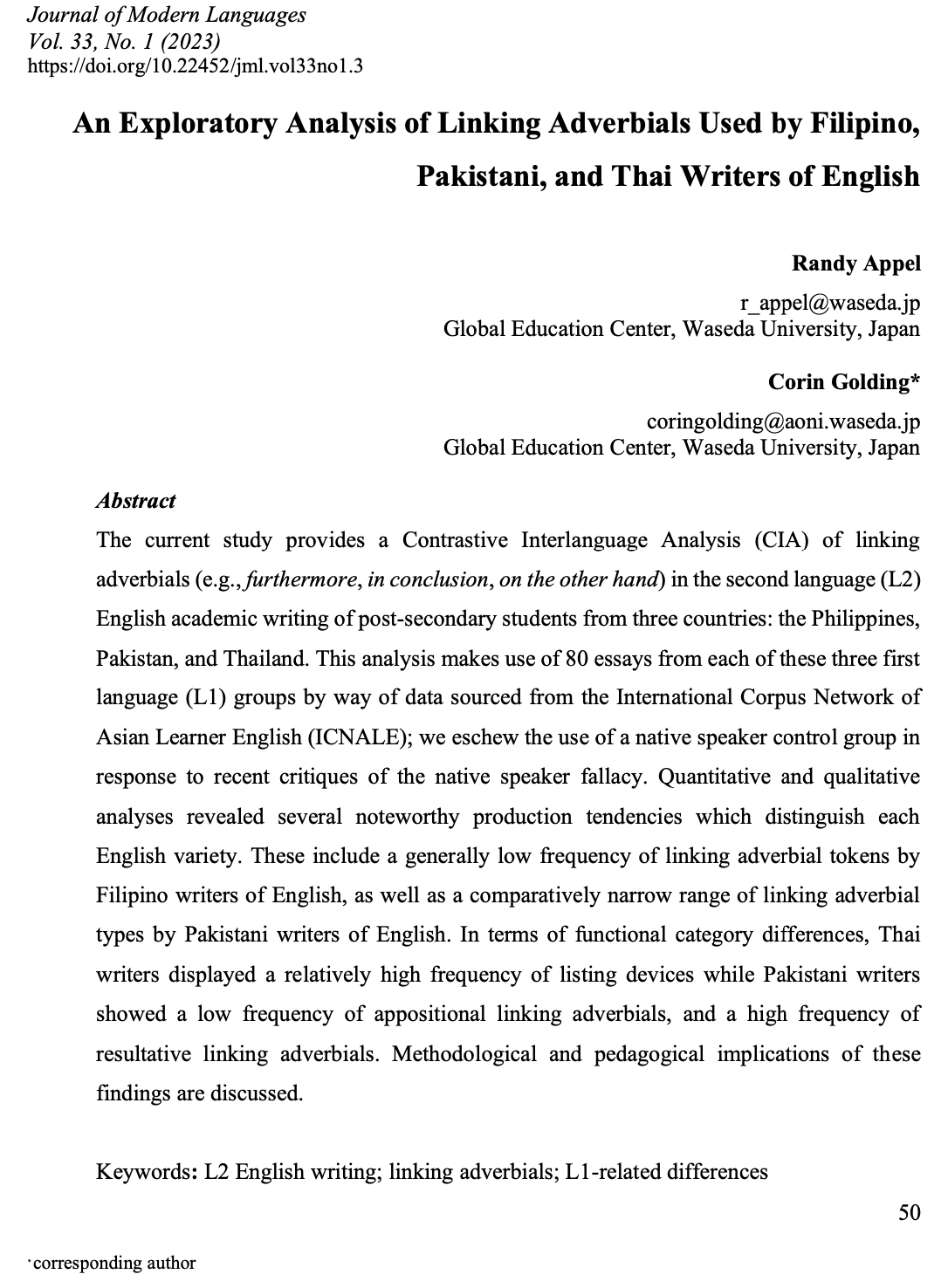An Exploratory Analysis of Linking Adverbials Used by Filipino, Pakistani, and Thai Writers of English
Main Article Content
Abstract
The current study provides a Contrastive Interlanguage Analysis (CIA) of linking adverbials (e.g., furthermore, in conclusion, on the other hand) in the second language (L2) English academic writing of post-secondary students from three countries: the Philippines, Pakistan, and Thailand. This analysis makes use of 80 essays from each of these three first language (L1) groups by way of data sourced from the International Corpus Network of Asian Learner English (ICNALE); we eschew the use of a native speaker control group in response to recent critiques of the native speaker fallacy. Quantitative and qualitative analyses revealed several noteworthy production tendencies which distinguish each English variety. These include a generally low frequency of linking adverbial tokens by Filipino writers of English, as well as a comparatively narrow range of linking adverbial types by Pakistani writers of English. In terms of functional category differences, Thai writers displayed a relatively high frequency of listing devices while Pakistani writers showed a low frequency of appositional linking adverbials, and a high frequency of resultative linking adverbials. Methodological and pedagogical implications of these findings are discussed.

